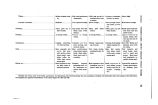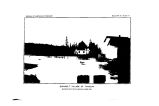| OCR Text |
Show 3 8 BUREAU OF AMERICAN ETHNOLOGY tBUlL. 42. GBAHAU, J. 8 . Scrofula among the Sioux Indians; its origin and nature. Amer. Pract. and News, Louisville, Ky., 1890, ix, 1- 6. At the time of the writing scrofula was prevalent in the tribe. Pages 3- 4: '' According to Alex. Rencountre and others, the first case of scrofula ( particularly) noticed among the Brule* Sioux occurred in 1869.'' . . . " I do not think the case referred to as occurring in 1869 was the first case of scrofula among them, but it certainly did not exist to an alarming extent before that time.'' " The older Indians and their traditions say that scrofula, syphilis, and consumption were little or almost unknown among them until within the last 50 years." Seemingly some connection between scrofula and introduction of cattle ( rations) in 1868. GUILBJRRT, CH. A. De la phthisis pulmonaire dans ses rapports avec I'altitude et avec les races au Pe* rou et en Bolivie. These, Par., 1862. Pages 19- 20: The full- blood Indians are almost exempt from consumption. The population of Peru is attacked by tuberculosis in the following order of frequency: Negro, pure descendants of the old Spanish, mixed- bloods, Europeans, full- blood Indians. Page 44: In Bolivia, phthisis " is not encountered among the natives." Page 59: " The Indian race has hitherto escaped tuberculisation." Page 70: " The Araucanian tribes who occupy the country between the Cordilleras and the sea, below the 36th degree of southern latitude, are completely exempt of tuberculisation. The disease is equally unknown in Patagonia." HEOER, A. Sanitary report, Fort Simcoe, Wash. Ter., U. S. A. Reports 1855^ 59, Washington, 1860, 263. Speaking of the Yakima in 1857, the writer says: " Their prominent diseases are phthisis, catarrhal and rheumatic affections, fevers, scrofula, variola, and venereal diseases." " Scrofula is of frequent occurrence; phthisis is very prevalent among them and always fatal." HILORETH, S. P. On the climate and diseases of Washington county, Ohio. Amer. Jour. Med. Sci., Feb., 1830. Treats of the period of the settlement of the region by whites, from 1788 to 1807. Page 326: " Theaborigines were subject to few diseases, and those of an inflammatory nature." . . . " Phthisis pulmonalis, at this early period, was a disease nearly or wholly unknown." The above has reference more particularly to the whites. Appearance of a few cases in 1808, and slow increase thereafter are noted; also that scrofula too was increasing ( 1829). HOLDER, A. B. Papers on diseases among the Indians. Med. Rec., N. Y., 1892. Page 178: Maintains that the Indians were never free from tuberculosis or scrofula; blames " transition" period for the spread of the diseases. Refers to specimen 17,223, Peabody Museum, Cambridge ( pictured in Bradford and Lovett's Orthopedic Surgery, p. 2), as showing evidence of prehistoric tuberculosis. Gives abstract of reports of agency physicians from twelve reservations, in nearly all of which the disease is shown to be prevalent. Among the Hupa, however, " consumption very rare- only two or three percent of deaths due to it. Scrofula is rare." HBDUCKA, ALES. Physiological and medical observations among the Indians of southwestern United States and northern Mexico. Bull. 34, B. A. E., Washington, 1908, i- VIII, 1- 425. Includes the writer's former observations on tuberculosis among the Indians; a detailed account of the 1904 report of the physicians in the Indian Service on the morbidity of tuberculosis among the various tribes, and bibliography. |


























































































